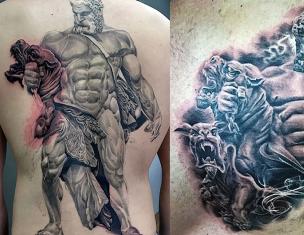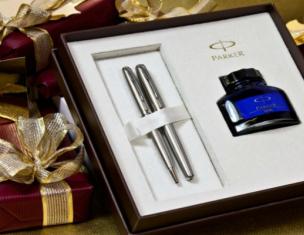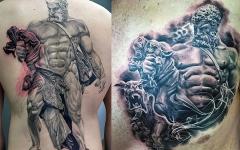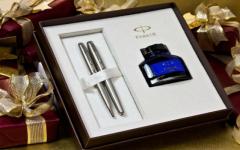An excellent question, because not everyone would risk getting rid of a good quality leather item. And why? Customization is becoming more and more in demand and popular every year. And I perfectly understand those people who, for various reasons, cannot part with their old, but very beloved things.
Leather items are a completely separate issue. In my opinion, a quality leather item will last longer than we could ever imagine. To do this, it is enough to simply redo this thing slightly, breathing into it a new, fresh note, so to speak.
For example, from a leather jacket it is very large size can be sewn women's jacket a smaller size, or a vest of any length, or a children's jacket, or even a small jumpsuit. To do this, just take any pattern you like. We carefully rip off the sleeves, work on the shelves, remove the lining, and then you can apply the pattern to the material. By the way, if a thing has a not very pleasant aroma (over time this can happen with leather products), then first you should remove the contaminated areas, dry it, and then put it in a tight bag and place fresh tangerine / orange / lemon peels there (but not the zest ). Keep the bag closed for one night. I assure you, the skin will acquire a unique smell.
You can also make quite a lot of gloves from leather items. The most varied styles - long, short, without fingers. You can decorate them to your taste. Let's get ultra-fashionable and stylish accessories, moreover, original ones that will serve you for several more years. For example, you can use this pattern:
Transfer it to the skin, do not forget to add a little to the allowances and cut it out. Lay the lines on a machine - it’s difficult and not so beautiful by hand.
They'll turn out great leather belts and bracelets. Amazingly beautiful flowers can also be made from leather. For this you will need any leather item prepare by ripping and removing the lining.

Next, from cardboard, for example, we make a pattern of petals (if we are making a rose, chamomile, sunflower, etc.), the middle, then we transfer it to the material, cut it out and assemble all the parts using hot glue. Such flowers can be used to create brooches and bracelets. And they are also suitable as decorations for bags, berets, and hats.

I like to use leather jackets or trousers and even leather boot tops to make bags and clutches.
In fact, there is nothing easier than sewing a clutch from unwanted old leather items. To do this, you need to select the optimal pattern, transfer it to the fabric, cut it, and sew it. By the way, if, for example, you are using an old raincoat or jacket, then you can not rip off the lining fabric, which will reduce time and make the work easier.
The seams on the clutch can be done by hand. Use some decorative stitch that you are good at to make it beautiful. The decor is at your discretion.
I think you've seen leather slippers on sale. So what’s stopping you and me from making such slippers from old leather things)?

It's simple. We need to print the pattern. There are a lot of them on the Internet, and you can easily choose the size you need by simply enlarging the picture. Next, use a piece of chalk or a piece of dry soap and trace the pattern onto the skin. Next we carry out the usual work.
Well, and, of course, you can make wallets of different sizes and designs, purses, and cases for smartphones/phones from leather items. And this product is even suitable for a gift if everything is done carefully.
Leather products are very practical and durable. They can be passed on from the older generation to the younger, the only problem is that leather tends to wear out and go out of fashion. If you want to breathe into something you or your parents love new life, then you can alter a leather jacket, and do it yourself.
To do this, you will need a minimum of available tools, the most important thing is that you have a pattern for the desired product. If you have sufficient cutting and sewing skills, you can do it yourself; if you don’t have those, contact a studio.
Available means
In your work you cannot do without the following materials:
- himself leather product– jackets;
- rubber glue;
- needles and paws for working with genuine leather;
- a sewing machine capable of processing such material;
- roller knife or sharp scissors;
- non-woven fabric intended for leather;
- wooden hammer.
How to alter a leather jacket with your own hands
When getting started, follow this plan:

- Make the pattern. Outline all the details of the leather product, modeling them according to your figure.
- Now it's time to open up the old jacket. Use a scalpel or razor to cut sutures. Good if you have to change it into a jacket leather coat– then the pattern pieces will fit freely on the material and the seams will not be affected at all. Otherwise, if you don’t have a cloak, but outerwear smaller sizes, they need to be well straightened, and if they are glued, then ironed through gauze, but only from the wrong side.
- Lay out the pattern of the product on the leather and trace each individual detail. Don’t forget to leave allowances for the seams, approximately 1–2 cm. More at the bottom – 2.5–3 cm, and 0.5–1 cm is enough for the neckline and rollbacks. In the same way, cut the interlining, which will be used as linings;
- How can you alter a jacket at home? Now it's time to cut out the leather pieces using sharp scissors or a roller cutter. Having strengthened them with non-woven fabric, finally pin them together with ordinary paper clips. There is no way to sweep away the skin, as holes from the needle will remain;
- Now you need to equip the machine with a roller or Teflon foot, install a thick triangular needle and start stitching parts at home. It is better to set the stitching to 3 mm to prevent excessive perforation of the material.
- The seams of the leather product must be tapped with a wooden hammer. Try to machine stitch carefully.
- Now you can turn the product inside out and iron it with an iron. Using glue, connect the edges of the seam allowances, wait until it dries. Sew on a collar, stitch in sleeves, sew in a zipper with your own hands.
- Fold and glue the bottom, leaving the top of the hem free. Sew the lining parts and connect it to the base. Hem the bottom and sleeves.
How to make a product look presentable again

You already know how you can alter a leather jacket, but how can you return the material to its former shine and beauty? If you have visible defects - abrasions, cuts and others, then the product can be painted with special paint.
Another way is to decorate the damaged area or restore it with liquid leather. The combination of leather with cashmere, suede, drape and other fabrics looks very stylish and modern.
This approach is appropriate if old thing has the same size as the one that is planned to be obtained as a result. The presence of defects complicates the process.
Therefore, parts cut from a different material can not only solve the problem, but will also become a decoration of the new jacket, its highlight.
It is known that jackets made of genuine leather are very practical and durable. The only negative is that over time, leather products wear out and, unfortunately, go out of fashion. To breathe new life into your favorite item, you can alter a leather jacket, and thus it will acquire completely new qualities. With effort, patience and a little imagination, you can remake an old jacket in a new way, thus updating your child’s wardrobe. If you have enough skills, then this work can be done with your own hands.

An example of altering a leather jacket
Advice! However, before altering an old leather jacket, you need to prepare a pattern, which you can make yourself or contact a professional cutter.

Altered leather jacket
Before starting work, it is necessary to prepare available materials that will speed up the process of remaking a leather product. The following “tools” of labor will be needed for work:
- sharp scissors and a roller knife;
- rubber adhesive based on rubber;
- mallet;
- interlining;
- tailor's needles;
- sewing machine;
- tailor's meter;
- old leather jacket.

Before starting work, you need to prepare available materials
So, if everything is ready, then you can start working.
Action plan
- Before altering a leather jacket, you need to outline all the details, that is, prepare a template or pattern.
- If the model is ready, then you can start ripping out the old jacket. You need to cut strictly at the seams using a sharp tool, razor or scalpel.
- If you need to alter a leather raincoat into a jacket, the task is simplified, since the detailing of the pattern allows free movement on the old material.

You need to cut strictly at the seams
4. Each detail of the future model is outlined along the contour with a seam allowance of 1-1.5 cm. For the edges and neckline, 0.5 cm is enough, and the seam allowance at the bottom should be at least 3 cm.
5. In the same way, an allowance is left when cutting interlining used as a cushioning material.
6. Using duct tape or tape, we connect the upper parts of the clothing, securing everything with paper clips or tailor pins.
7. Having prepared the sewing machine for work, we begin to sew together the main parts of the clothing.
8. The stitch pitch is set to 3-3.5 mm to prevent perforation of the leather material.
9. In order for the seams on the product to have a neat appearance, it is necessary to tap the machine stitches with a mallet.
10. If everything is done correctly and carefully, then the next stage is processing the wrong side.
11. Each machine-turned detail is ironed. The heating temperature of the electrical appliance should be minimal to prevent deformation of the leather material.
12. The final part of the modeling process is sewing in the sleeves and collar, as well as attaching the zipper or buttons.

Each machine-turned detail is ironed
In this way, you can alter a leather jacket (photo) to your liking, using an interesting design solution that will give the product exclusivity.
Customizing from Victoria Grushevskaya
Recently, in preparation for the spring-summer season, I reviewed my wardrobe, and at the same time reviewed my husband’s things. His old leather jacket, which was already a good ten years old, caught my eye. The first thought was to throw it away as unnecessary trash. However, something was holding me back, probably my memory. Too many memories came flooding back. After all, it was precisely when he was dressed in this thing that the modest young man, plucking up courage, came up to me to introduce himself. Perhaps this leather jacket became lucky not only for him, but also for me. It became a pity to part with it, and I decided to change the men's leather jacket into a stylish and fashion vest.

Leather jacket vest
All I needed for work:
- manual and machine needle No. 10:
- sewing machine;
- tailor's scissors, pins and chalk;
- ironing board;
- iron;
- cotton iron;
- black threads and sunflower oil.

Using scissors, you need to make 2-2.5 cm notches in the rounded areas.

In order not to damage natural leather, you need to turn off the steamer in the iron and set the heating temperature to min mode
Attention! To make your work easier sewing machine To avoid breaking the needle, lubricate the working leather surface with sunflower oil if you don’t have a Teflon foot. It improves glide sewing foot, and ensures perfect finishing stitching.
The finishing stitches lay perfectly on the treated surface, which means that temporary stitches can be removed. The work is done, now it’s time for heat treatment. To avoid damaging natural leather, you need to turn off the steamer in the iron and set the heating temperature to min. Iron finished product made of genuine leather should be ironed, this will preserve the surface without damage. The final stage is checking the processed armholes, and fixing the ripped part at the bottom of the jacket, now the vest, with hidden stitches.
Well, that's it, my work is finished! The result is a beautiful, versatile men's vest made of genuine leather that can be worn with a sweater, turtleneck or jumper. I'm waiting for my husband to try on the new thing, I hope he likes it.
Bringing back its former freshness
When everything is done, and it is known how and where to alter a leather jacket, the question arises of restoring the presentable appearance of the leather product. After all, an old jacket usually has some visible or invisible defects. First of all, these are kinks, abrasions, cuts and other deformation conditions. We need to get rid of this urgently. In retail there are many special coloring agents, allowing you to introduce novelty into the altered product. In addition, if the damaged area is difficult to paint, or the defect cannot be hidden, decoration comes to the rescue. Embossing or a stylishly selected applique is applied to the problem area. The material, suede, cashmere, drape and other fabrics are selected based on the texture of the leather product.

Patch on a leather jacket
Advice! The highlight of the design solution can be the play of color contrast, the use additional accessories, for example, buttons, rivets, decorative ailets or steel chains.
Dare and fantasize!
High quality Genuine Leather– the material is expensive and durable. If there is a spacious, unfashionable leather jacket in the house, it simply needs to be given a second life. Subject to desire and free time, of course.

Sewing lovers will enjoy this work. To perform the most complex knots, you can contact a professional tailor.
Complete makeover or simple change
The simplest alteration will be without changing the armhole and edging:
- Fitted side seams, length change.
- An interesting insert on the back, along with changing the length, will turn your favorite jacket into a designer item.

- You can cut off the collar, decorate the neckline and sides with finishing braid or shorten the sleeve. The jacket will change its look and style with the least amount of time and effort.

- Unworn areas of leather can serve as material for making a new item; as an addition, you can use material of a suitable or contrasting color and texture.

Complete recut, only a jacket is suitable for him larger size and volume. When re-cutting, the lines of the new cut are shifted inside the parts by no less than the width of the seam allowance. Traces from old stitching spoil the appearance and weaken the strength of the material.

Materials and tools
Before you start work, you need to prepare everything you need:
- To sew such a jacket, a sewing machine is suitable, which makes a high-quality straight stitch. It is advisable that the stitch width of the line be from 0.4 cm to 0.9 cm. Large stitches look good on leather. finishing stitch. For internal seams, the stitch length is also larger than for fabric - 0.4-0.5 cm.
- It would be good if the machine had a Teflon foot for sewing leather. If there is no such foot, you can simplify the operation of the machine by lubricating the skin in front of the foot with machine oil. The method is suitable for skin dark color, some light ones will have stains.
- Today on sale there are special machine needles for sewing leather marked LR. They differ in the shape of the tip, which allows them to cut through the skin with minimal damage.
- Any sharp tailor's scissors will be suitable for cutting, it is better that the blades are 11 or 12 inches long.
- Cutting details are applied from the front side using a marking rod on the leather. Outwardly it looks like a rod for ballpoint pen, line color is silver. Unnecessary lines can be easily removed from the surface of the skin with machine oil.
- Leather glue will help secure the open seam allowance or zipper before stitching.
Reference! There are also on sale hand needles for sewing leather, the needle pierces it much easier than a regular one.
Rework process
- The jacket is ripped out at those seams that cannot be used in the new model. Pockets, the middle back seam, and the front seam of a two-seam sleeve can often be left unchanged.
Attention! The leather is ironed at low temperature without steam; you can use an ironing iron (a piece of cotton fabric).
- The pattern pieces are applied on the front side, so no defects will be missed. Textured irregularities can be placed in places where they will not be very noticeable. The pattern is outlined with a special rod, and special marks are applied in the right places, replacing notches on the fabric.
Attention! The pattern needs to be tested; it will be almost impossible to make further changes during sewing. Traces of old stitching can ruin the best work.
- We glue the prepared parts with non-woven material along the edge of the side, armhole, neck and bottom of the sleeves and bodice. The jacket stretches a lot when worn, duplicating will help avoid stretched hem and armholes.
Sewing order a leather item is not much different from any other item:
- We process the back and shelves separately and assemble them into a bodice.
- At the same time, we assemble the sleeves.
- We assemble the finished bodice and sleeves and cover them with lining.

When sewing seams on leather, there is no way to iron them out like on fabric, so we use prepared glue to secure the seam allowance. The allowance itself and the part along the seam are processed with glue, the allowances are laid out and pressed.
Important! After hardening, the glue should retain the plastic properties of the skin and not turn into a hard crust.
Before stitching, we tap complex knots where there are several seams with a regular hammer, or with a mallet if the leather is delicate and easily damaged.

How to freshen up the appearance of a jacket
Over time, a leather jacket wears out and abrasions appear on the top layer. Fortunately, these changes are easy to fix:
- First, the jacket must be cleaned by wiping with a damp cotton cloth.
- soften natural material The top can be coated with colorless cream, already at this stage the jacket will take on a renewed look.
- Pick up suitable shade paint and dye your favorite jacket at home. Paints for sale are available for different types leather and suede.
Attention! Before use, it would be good to test the paint on an area hidden from view, for example, on the inside of a pocket.

Conclusion
Skin is very grateful material, it wears well. Leather items look good; one or another model is always at the peak of fashion. A stylish leather jacket model can be the basis of more than one successful autumn-spring wardrobe capsule.
Unlike artificial leather, genuine leather is very pleasant to wear. It is not hot on a warm autumn day and warm on a cool day. It will protect you in rainy weather and add to your mood stylish look on a sunny day.
We present to you a vest: leather + silver fox (this is what you can make from one skin and an old jacket)


Works of the master Magnolia (Elena)
heart box
round box
blanks for a future painting
I made all this from old leather jackets.
Let's make a rose. What we need: car primer, acrylic paints, Moment glue.
1. Make a pattern from cardboard (the size of the rose depends on the size of the pattern), transfer it to the skin, cut out:
2. Place the petals, suede side down, on the hot burner; when the edges curl, remove. 3. Cover with primer and let dry for 20 minutes.
4. Color without using water:
5. Roll one petal into a tight tube:
6. Collect the rose petal by petal:
7. We bring the rosette into a “marketable” form: we shade it with a different color, you can cover it with mother-of-pearl paint:
The rose is ready!
Making a lily
1. We make a petal pattern from cardboard (mine: length - 10 cm, width - 5 cm, base - 2.5 cm); Transfer to the skin, cut out, adding 5 mm for the bend (except for the base). You need 6 petals, a rectangle (about the size of a matchbox), and stamens - 4 cm each.
2. Bend the rectangle, twist it into a tight tube, and glue it at the edge.
3. Glue the stamens to form a pistil
4. Lubricate the petal along the edge with “Moment” from the suede side, smear it with a cotton swab.
5.Fold the edges and press with your fingers.
6.Lubricate the middle of the petal (along the length).
7. Bend the petal. We make the remaining petals in the same way.
8. Lubricate the petal at the base with glue.
9. Assembling the lily: glue the first petal onto the pistil
the remaining 3
10. Cover the finished flower with a primer
11. Paint with acrylic paints without using water
Lily is ready! The leaves are made in the same way as the petals, only with additional veins. Leaves can be any size
When gluing it onto a picture, the stem of the flower may turn out to be large, then we simply trim it.









